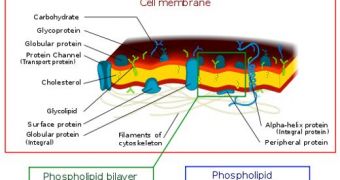Our cells' ability to move ions through their membranes and to only allow for a certain type of ions either in or out is arguably one of the most important set of traits it has. In charge of letting various chemicals through are structures inside the membrane known as ion channels, which display a property called permissibility. This allows them to only open for a certain type of substances. But the flow of ions through these channels has not been measured accurately until now, in spite of researchers' best efforts, Technology Review reports.
Now, a group of investigators believes that they may be close to discovering how to do that and argue that quantum measurements could paint a very clear picture of this important cellular process. Some of the most important functions that ion channels perform include cardiac function, the activation of T-cell, as well as the release of pancreatic beta cell insulin. The channels themselves are nothing more than proteins embedded in the cellular membrane. They act as pores, opening up just for substances of a certain mix and blocking all of the others.
Until now, using a black lipid layer was one of the main methods of investigating the complex' flow of ions through these pores. This structure acts as a synthetic cell membrane, and scientists would simply allow the ions to flow on top of it, analyzing how they pass through. Now, scientists at the University of Melbourne in Australia, led by expert Leonard Hall, propose that scientists should use nanodiamonds to perform these investigations. What makes them especially useful is the fact that fast electron spins cause decoherency in nitrogen atoms in the middle of carbon matrix. This means that the “hole” is easily controlled by light, but also isolated from the environment via a carbon matrix.
The team argues that a nanodiamond should be placed on the tip of an atomic force microscope (AFM), and then brought extremely close to the ion channel. Using microwave pulses, the electron spins in the nitrogen vacancies are then set to a certain state. Then, when the ion channel opens, the passing of ions through it would generate a small magnetic field. This field would interact with the electrons' spin, forcing them to decohere again. This makes the nitrogen vacancies, or holes, fluoresce in specific wavelengths. These changes can be thoroughly analyzed afterwards. The team admits the method is a bit complicated, but adds that it could prove to be more precise than any other.

 14 DAY TRIAL //
14 DAY TRIAL //